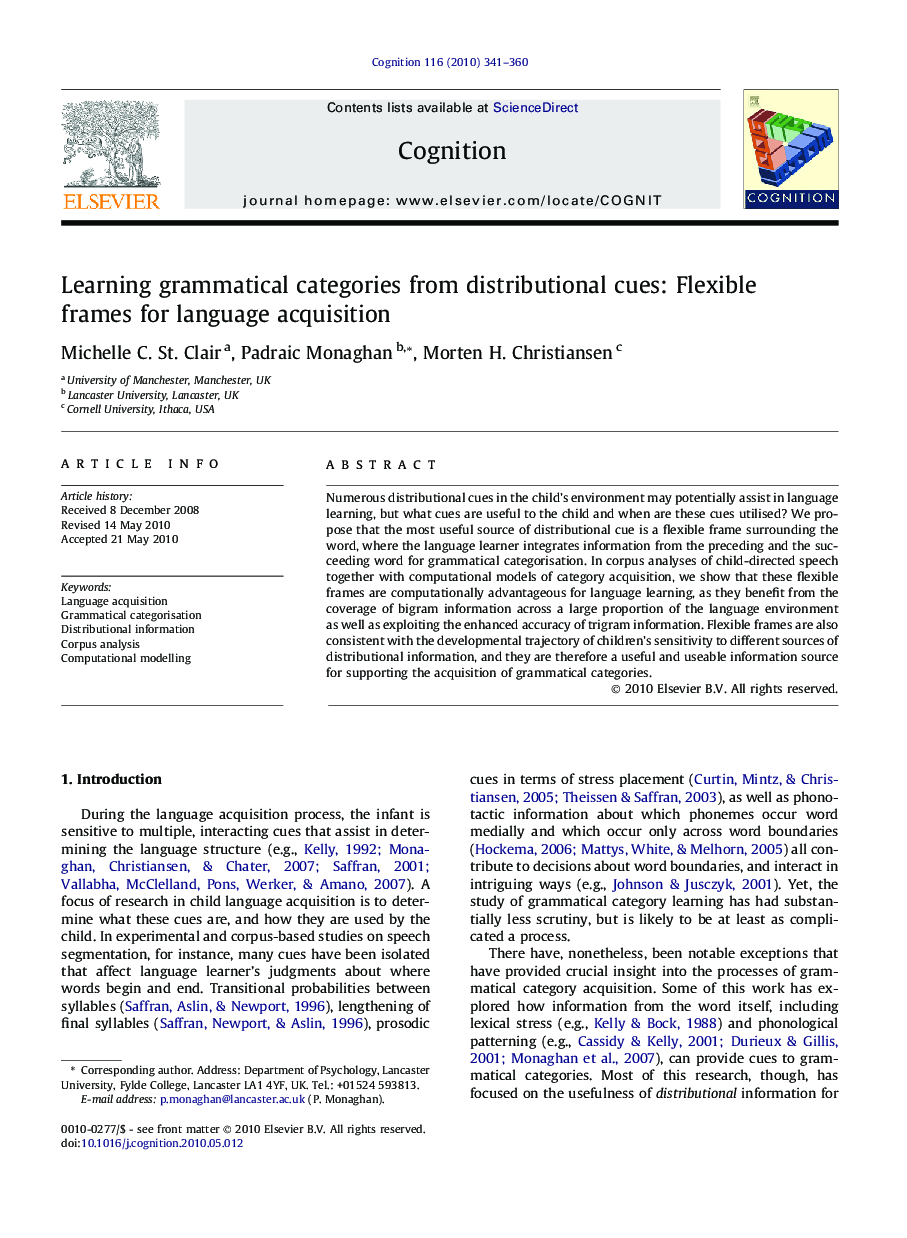| Article ID | Journal | Published Year | Pages | File Type |
|---|---|---|---|---|
| 926737 | Cognition | 2010 | 20 Pages |
Numerous distributional cues in the child’s environment may potentially assist in language learning, but what cues are useful to the child and when are these cues utilised? We propose that the most useful source of distributional cue is a flexible frame surrounding the word, where the language learner integrates information from the preceding and the succeeding word for grammatical categorisation. In corpus analyses of child-directed speech together with computational models of category acquisition, we show that these flexible frames are computationally advantageous for language learning, as they benefit from the coverage of bigram information across a large proportion of the language environment as well as exploiting the enhanced accuracy of trigram information. Flexible frames are also consistent with the developmental trajectory of children’s sensitivity to different sources of distributional information, and they are therefore a useful and useable information source for supporting the acquisition of grammatical categories.
